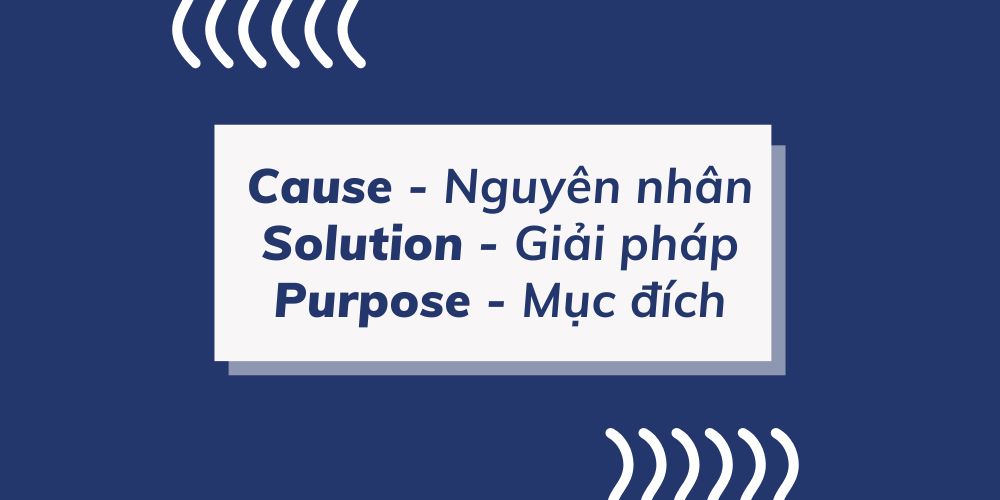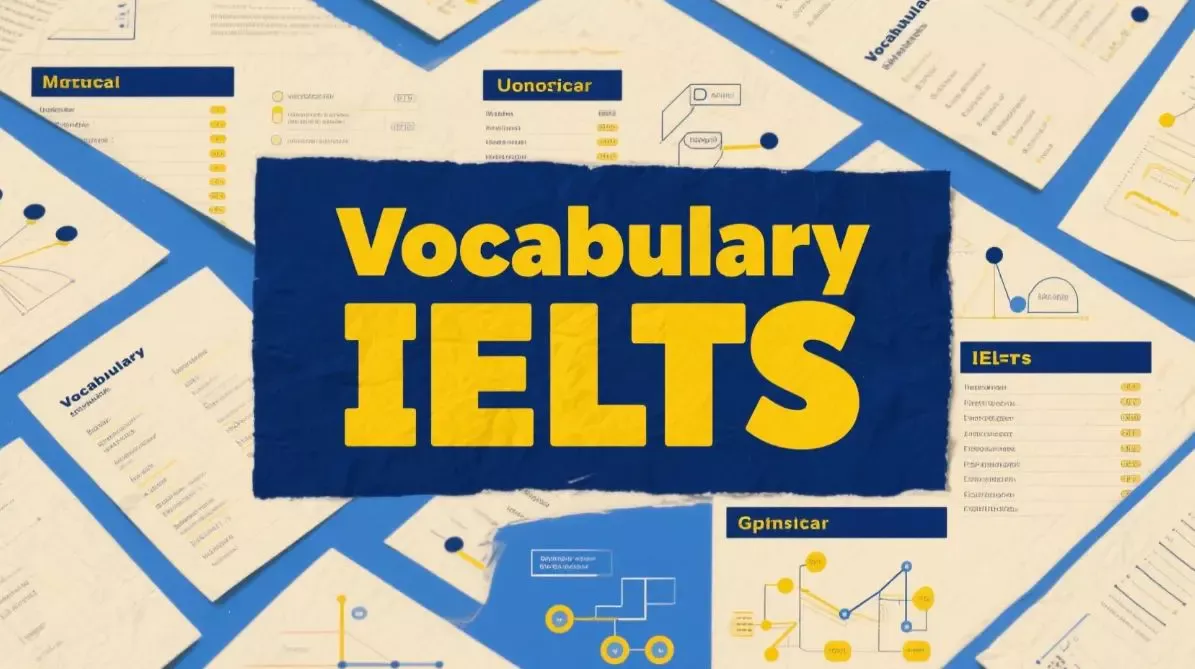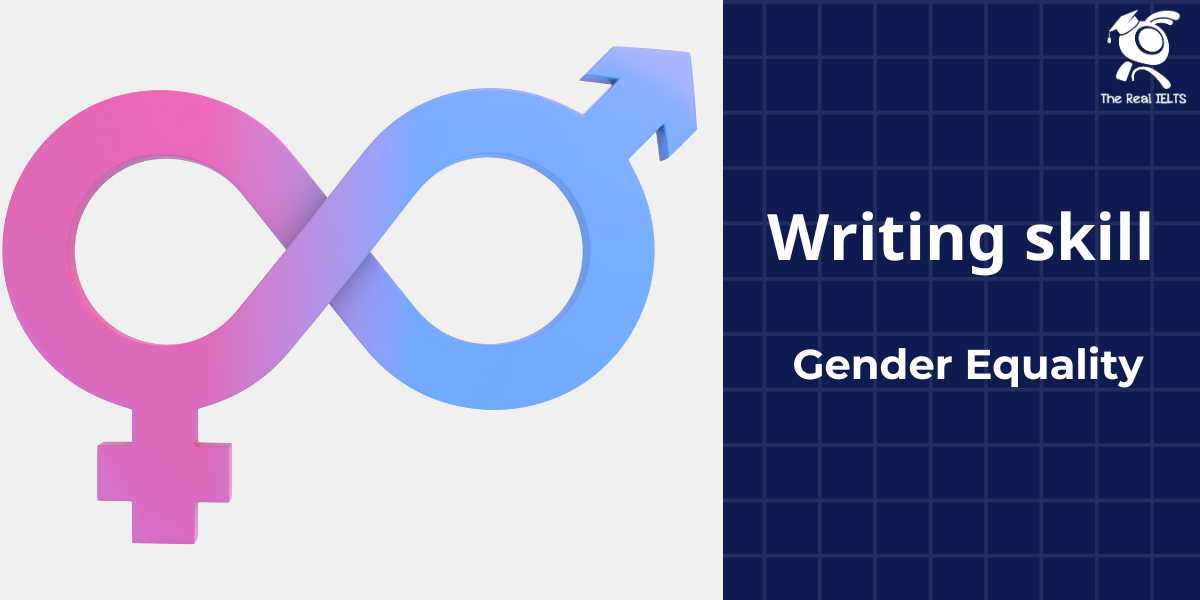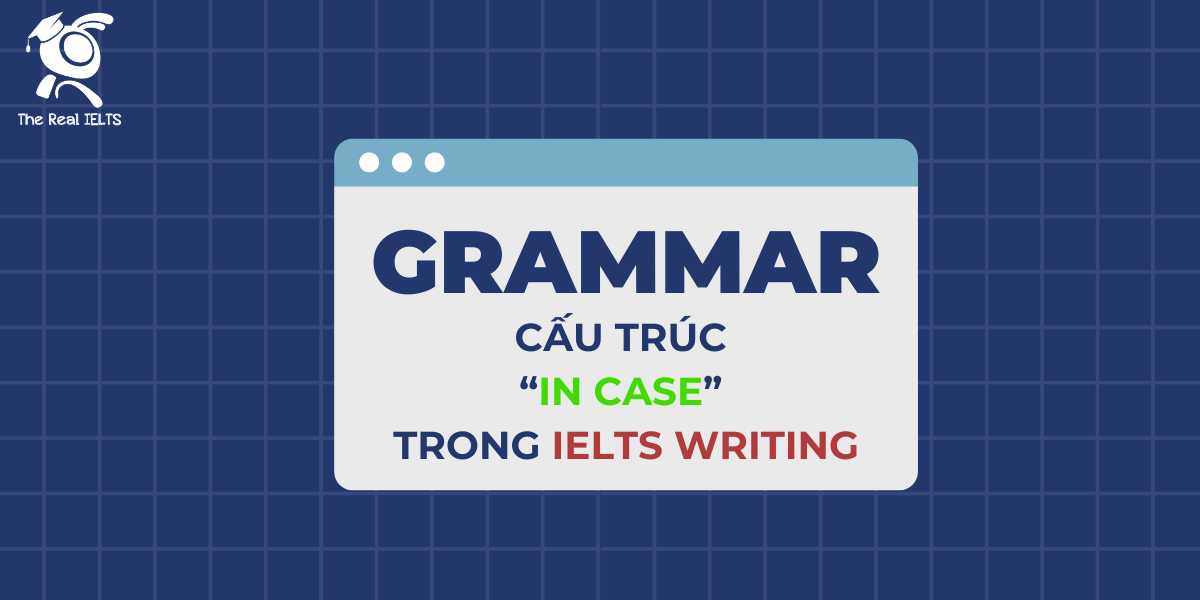“Cause – Solution – Purpose” là một cấu trúc cơ bản trong việc viết văn bản tiếng Anh để mô tả một vấn đề, đề xuất giải pháp và nêu rõ mục đích hoặc lợi ích của việc giải quyết vấn đề đó.
Cause (Nguyên nhân):
- Mục đích: Giới thiệu nguyên nhân hoặc vấn đề mà bạn đang giải quyết. Điều này tạo ra bối cảnh cho độc giả hiểu về tình hình và cần phải giải quyết vấn đề gì.
- Ví dụ: “The increasing levels of air pollution in urban areas have become a serious health concern.”
Solution (Giải pháp):
- Mục đích: Trình bày giải pháp hoặc cách tiếp cận để khắc phục vấn đề đã nêu ở phần nguyên nhân. Điều này giúp độc giả hiểu cách bạn đề xuất giải quyết vấn đề.
- Ví dụ: “To address this issue, implementing stricter emission standards for vehicles and promoting the use of public transportation are essential steps.”
Purpose (Mục đích):
- Mục đích: Nêu rõ lợi ích hoặc mục tiêu mà giải pháp đề xuất có thể mang lại. Điều này giúp thuyết phục độc giả về tính khả thi và giá trị của giải pháp.
- Ví dụ: “By adopting these measures, we can significantly reduce air pollution levels, improve public health, and create a more sustainable and livable environment for future generations.”
Với cấu trúc “Cause – Solution – Purpose”, bạn có thể tổ chức thông tin một cách rõ ràng và thuyết phục, giúp độc giả hiểu rõ về vấn đề, giải pháp và lợi ích của việc thực hiện giải pháp đó.
40 câu ví dụ cho cấu trúc “Cause – Solution – Purpose”


- Cause: Deforestation has led to the loss of crucial wildlife habitats and an increase in carbon dioxide levels.Solution: Planting more trees and implementing strict policies against illegal logging can help restore ecosystems.Purpose: This will promote biodiversity, reduce carbon emissions, and create a healthier environment for both humans and wildlife.
- Cause: Excessive use of plastic contributes to pollution in oceans and harms marine life.Solution: Implementing plastic recycling programs and encouraging the use of eco-friendly alternatives can address this issue.Purpose: To protect marine ecosystems, reduce plastic waste, and preserve the well-being of aquatic species.
- Cause: Industrial emissions release harmful pollutants into the air, leading to air quality deterioration.Solution: Transitioning to renewable energy sources and adopting cleaner technologies in industries can mitigate air pollution.Purpose: Improving air quality, minimizing respiratory diseases, and fostering a healthier living environment.
- Cause: Improper disposal of electronic waste contaminates soil and water with hazardous materials.Solution: Promoting e-waste recycling centers and implementing proper disposal methods can prevent environmental contamination.Purpose: To safeguard soil and water quality, reduce the impact of hazardous substances, and promote sustainable waste management.
- Cause: Agricultural runoff containing pesticides and fertilizers contributes to water pollution.Solution: Implementing sustainable farming practices and using organic alternatives can reduce the impact of agricultural runoff.Purpose: To protect water quality, preserve aquatic ecosystems, and ensure the safety of drinking water sources.
- Cause: Climate change leads to more frequent and severe natural disasters, such as hurricanes and wildfires.Solution: Implementing global measures to reduce carbon emissions and promote sustainable practices can mitigate the effects of climate change.Purpose: To safeguard communities, preserve ecosystems, and ensure a more stable climate for future generations.
- Cause: Overfishing depletes marine resources and disrupts aquatic ecosystems.Solution: Enforcing fishing quotas, promoting sustainable fishing practices, and creating marine protected areas can help restore fish populations.Purpose: To maintain a balanced marine ecosystem, support the livelihoods of fishing communities, and ensure the availability of seafood for future generations.
- Cause: Inefficient waste management leads to the accumulation of landfills and pollution.Solution: Implementing comprehensive waste recycling programs and educating the public on responsible waste disposal can reduce the environmental impact.Purpose: To minimize landfill usage, decrease pollution, and promote a circular economy.
- Cause: Urbanization and industrialization contribute to the loss of green spaces and biodiversity.Solution: Planning and implementing green infrastructure projects in urban areas can enhance biodiversity and provide ecological benefits.Purpose: To create more sustainable and livable cities, improve air quality, and support biodiversity conservation.
- Cause: Inadequate sewage treatment leads to water pollution and negatively impacts aquatic ecosystems.Solution: Upgrading sewage treatment plants and implementing stricter regulations on industrial wastewater discharge can improve water quality.Purpose: To protect water resources, preserve aquatic habitats, and ensure access to clean and safe water for communities.
- Cause: Use of non-biodegradable pesticides harms soil health and affects the fertility of agricultural lands.Solution: Promoting organic farming practices and using natural pest control methods can mitigate the impact of chemical pesticides.Purpose: To maintain soil fertility, promote sustainable agriculture, and ensure long-term food security.
- Cause: Deficient waste disposal in coastal areas contributes to beach pollution and harms marine life.Solution: Implementing beach cleanup initiatives and raising awareness about responsible waste disposal can address this issue.Purpose: To preserve coastal ecosystems, support tourism, and protect the well-being of marine species.
- Cause: Airborne pollutants from vehicle emissions contribute to smog and respiratory issues in urban areas.Solution: Encouraging the use of electric vehicles, improving public transportation, and implementing stricter emission standards can reduce air pollution.Purpose: To improve air quality, enhance public health, and create more sustainable urban environments.
- Cause: Mining activities lead to habitat destruction, soil erosion, and water pollution.Solution: Implementing responsible mining practices, restoring mined areas, and enforcing environmental regulations can mitigate the impact of mining.Purpose: To minimize environmental degradation, preserve ecosystems, and ensure sustainable resource extraction.
- Cause: Increased use of chemical fertilizers in agriculture contributes to nutrient runoff and harms water quality.Solution: Implementing precision farming techniques and promoting the use of organic fertilizers can reduce the impact of agricultural runoff.Purpose: To protect water resources, support sustainable agriculture, and prevent adverse effects on aquatic ecosystems.
- Cause: Improper disposal of hazardous waste poses a threat to human health and contaminates the environment.Solution: Implementing strict regulations on the disposal of hazardous waste and promoting safe waste management practices can mitigate risks.Purpose: To protect public health, prevent environmental contamination, and ensure the safe handling of hazardous materials.
- Cause: Rapid urbanization leads to the loss of green spaces, contributing to the heat island effect in cities.Solution: Designing and implementing green urban planning strategies, such as creating parks and green rooftops, can mitigate the heat island effect.Purpose: To improve urban climate resilience, enhance the quality of life, and promote sustainable urban development.
- Cause: Excessive use of chemical pesticides harms beneficial insects and disrupts the balance of ecosystems.Solution: Promoting integrated pest management practices and reducing reliance on chemical pesticides can protect biodiversity.Purpose: To support ecosystem health, maintain biodiversity, and ensure the sustainability of agricultural systems.
- Cause: Oil spills in oceans result in devastating environmental damage and harm marine life.Solution: Implementing strict regulations on oil drilling and transport, as well as investing in advanced cleanup technologies, can mitigate the impact of oil spills.Purpose: To protect marine ecosystems, support fisheries, and prevent long-term damage to coastal environments.
- Cause: Inefficient energy consumption contributes to the depletion of natural resources and increases greenhouse gas emissions.Solution: Promoting energy efficiency measures, transitioning to renewable energy sources, and raising awareness about sustainable energy practices can address this issue.Purpose: To conserve natural resources, reduce carbon emissions, and create a more sustainable energy future.
- Cause: Urban waste incineration releases harmful pollutants into the air, contributing to air pollution.Solution: Investing in advanced waste-to-energy technologies and promoting alternative waste disposal methods can reduce the environmental impact of incineration.Purpose: To improve air quality, minimize environmental pollution, and promote sustainable waste management.
- Cause: Chemical contamination from industrial discharges poses a threat to water quality and aquatic life.Solution: Enforcing strict regulations on industrial wastewater disposal, implementing water treatment technologies, and promoting eco-friendly production methods can mitigate water pollution.Purpose: To protect water resources, preserve aquatic ecosystems, and ensure safe drinking water for communities.
- Cause: Excessive use of synthetic fertilizers contributes to nutrient runoff, leading to algal blooms and water pollution.Solution: Implementing sustainable farming practices, such as crop rotation and precision farming, can reduce the environmental impact of fertilizers.Purpose: To protect water quality, support sustainable agriculture, and prevent adverse effects on aquatic ecosystems.
- Cause: Landfills emit methane, a potent greenhouse gas, contributing to climate change.Solution: Implementing landfill gas capture systems and promoting waste-to-energy technologies can reduce methane emissions from landfills.Purpose: To mitigate climate change, reduce greenhouse gas emissions, and promote sustainable waste management practices.
- Cause: Industrial activities release heavy metals into water bodies, posing a threat to aquatic life and human health.Solution: Implementing advanced water treatment technologies, enforcing stricter regulations on industrial discharges, and promoting sustainable production practices can mitigate the impact of heavy metal pollution.Purpose: To protect water quality, preserve aquatic ecosystems, and ensure the safety of water resources for communities.
- Cause: Intensive agriculture leads to soil erosion, loss of topsoil, and degradation of arable land.Solution: Implementing soil conservation practices, such as cover cropping and contour plowing, can prevent soil erosion and improve soil health.Purpose: To maintain soil fertility, support sustainable agriculture, and ensure the long-term productivity of arable lands.
- Cause: Poor waste management practices in coastal areas result in plastic pollution and harm marine ecosystems.Solution: Implementing coastal cleanup initiatives, raising awareness about plastic recycling, and enforcing strict regulations on plastic use can address this issue.Purpose: To preserve coastal environments, protect marine life, and ensure the sustainability of coastal ecosystems.
- Cause: Urban sprawl and habitat destruction threaten the survival of many wildlife species.Solution: Implementing wildlife conservation programs, creating protected habitats, and promoting responsible urban development can protect biodiversity.Purpose: To preserve wildlife habitats, support ecosystem health, and maintain the balance of natural ecosystems.
- Cause: Excessive use of water for agriculture depletes water resources and contributes to water scarcity.Solution: Promoting efficient irrigation techniques, implementing water conservation measures, and raising awareness about responsible water use can address water scarcity issues.Purpose: To conserve water resources, support sustainable agriculture, and ensure access to water for both agricultural and domestic purposes.
- Cause: Industrial noise pollution disrupts wildlife habitats and negatively impacts the behavior of many species.Solution: Implementing noise reduction measures in industrial areas, enforcing noise pollution regulations, and creating wildlife corridors can mitigate the impact of industrial noise.Purpose: To preserve wildlife habitats, support biodiversity, and create a more harmonious coexistence between human activities and the natural environment.
- Cause: Invasive species threaten native ecosystems by outcompeting local flora and fauna.Solution: Implementing invasive species control measures, such as targeted removal and habitat restoration, can protect native biodiversity.Purpose: To preserve native ecosystems, support biodiversity, and maintain the balance of natural habitats.
- Cause: Excessive use of water in households and industries contributes to water scarcity.Solution: Promoting water conservation practices, implementing water-efficient technologies, and raising awareness about responsible water use can address water scarcity issues.Purpose: To conserve water resources, support sustainable water management, and ensure access to water for all.
- Cause: Land degradation due to unsustainable agricultural practices leads to desertification.Solution: Implementing sustainable land management practices, reforestation, and promoting agroecological approaches can prevent further land degradation.Purpose: To restore degraded lands, support sustainable agriculture, and mitigate the impacts of desertification.
- Cause: Excessive use of chemical fertilizers and pesticides in agriculture harms soil health and biodiversity.Solution: Promoting organic farming practices, agroecological approaches, and integrated pest management can reduce the environmental impact of chemical inputs.Purpose: To maintain soil fertility, support sustainable agriculture, and preserve biodiversity.
- Cause: Loss of wetlands due to urbanization and agriculture reduces the natural filtration of water.Solution: Implementing wetland conservation programs, creating protected wetland areas, and enforcing regulations on wetland destruction can protect water quality.Purpose: To preserve wetland ecosystems, support water quality, and maintain the ecological functions of wetlands.
- Cause: Oil exploration and drilling activities pose a threat to marine ecosystems and biodiversity.Solution: Implementing strict regulations on offshore drilling, promoting cleaner technologies, and investing in oil spill response capabilities can mitigate the environmental impact of oil exploration.Purpose: To protect marine ecosystems, preserve biodiversity, and prevent long-term damage to coastal environments.
- Cause: Airborne pollutants from industrial activities contribute to acid rain, harming soil and water quality.Solution: Implementing emission control measures, enforcing air quality regulations, and promoting cleaner industrial technologies can reduce the occurrence of acid rain.Purpose: To protect soil and water quality, support ecosystem health, and prevent the negative impacts of acid rain on the environment.
- Cause: Improper disposal of electronic waste leads to environmental contamination with hazardous materials.Solution: Implementing e-waste recycling programs, promoting responsible disposal methods, and enforcing regulations on electronic waste management can address this issue.Purpose: To prevent environmental contamination, support sustainable waste management, and ensure the safe handling of electronic waste.
- Cause: Loss of coral reefs due to climate change and pollution threatens marine biodiversity.Solution: Implementing coral reef conservation programs, reducing greenhouse gas emissions, and enforcing regulations on coastal development can protect coral reef ecosystems.Purpose: To preserve marine biodiversity, support fisheries, and maintain the ecological functions of coral reefs.
- Cause: Agricultural practices that involve clearing land contribute to deforestation and habitat loss.Solution: Promoting agroforestry practices, implementing sustainable land use planning, and creating protected areas can mitigate deforestation.Purpose: To preserve ecosystems, support biodiversity, and maintain the balance of natural habitats.
- Cause: Air pollution from vehicle emissions poses health risks and contributes to respiratory diseases.Solution: Promoting the use of electric vehicles, improving public transportation, and enforcing stricter emission standards can reduce air pollution.Purpose: To improve public health, minimize respiratory diseases, and create a more sustainable urban environment.
- Cause: Mining activities release heavy metals into rivers, harming aquatic ecosystems and threatening water quality.Solution: Implementing responsible mining practices, enforcing regulations on water quality, and restoring mined areas can mitigate the impact of mining on water resources.Purpose: To protect water quality, preserve aquatic ecosystems, and ensure safe drinking water for communities.
- Cause: Excessive use of groundwater for agriculture leads to depletion of aquifers and water scarcity.Solution: Implementing sustainable water management practices, promoting efficient irrigation techniques, and enforcing regulations on groundwater use can address water scarcity issues.Purpose: To conserve water resources, support sustainable agriculture, and ensure access to water for both agricultural and domestic purposes.
- Cause: Urban heat islands result from the lack of green spaces and excessive concrete in cities.Solution: Designing and implementing green urban planning strategies, creating parks and green rooftops, and promoting tree planting initiatives can mitigate the heat island effect.Purpose: To improve urban climate resilience, enhance the quality of life, and promote sustainable urban development.
- Cause: Soil erosion due to deforestation and poor land management practices leads to loss of fertile topsoil.Solution: Implementing reforestation projects, promoting sustainable land management practices, and enforcing regulations on land use can prevent soil erosion and improve soil health.Purpose: To maintain soil fertility, support sustainable agriculture, and ensure the long-term productivity of arable lands.
- Cause: Disposal of plastic waste in oceans harms marine life and contributes to the formation of plastic islands.Solution: Implementing stricter regulations on plastic use, promoting plastic recycling programs, and raising awareness about responsible plastic disposal can address this issue.Purpose: To protect marine ecosystems, reduce plastic pollution, and preserve the well-being of marine species.
- Cause: Inadequate waste disposal practices result in the accumulation of landfills and environmental pollution.Solution: Implementing comprehensive waste recycling programs, promoting waste reduction initiatives, and enforcing regulations on waste management can reduce the environmental impact of landfills.Purpose: To minimize landfill usage, decrease pollution, and promote a circular economy.
- Cause: Agricultural runoff containing pesticides and fertilizers contributes to water pollution and harms aquatic life.Solution: Implementing buffer zones, promoting sustainable farming practices, and enforcing regulations on agricultural runoff can reduce the impact on water quality.Purpose: To protect water quality, preserve aquatic ecosystems, and ensure the safety of drinking water sources.
- Cause: Climate change leads to more frequent and severe droughts, impacting water availability and agricultural productivity.Solution: Implementing water conservation measures, promoting drought-resistant crops, and raising awareness about climate change adaptation can mitigate the impact of droughts.Purpose: To ensure water availability for agriculture, support food security, and adapt to the changing climate.
- Cause: Improper disposal of hazardous waste poses a threat to soil quality, groundwater, and human health.Solution: Enforcing strict regulations on hazardous waste disposal, promoting safe waste management practices, and raising awareness about the risks of hazardous materials can address this issue.Purpose: To protect soil quality, prevent environmental contamination, and ensure the safe handling of hazardous waste.
- Cause: Construction activities contribute to habitat destruction, soil erosion, and disturbance of local ecosystems.Solution: Implementing sustainable construction practices, minimizing habitat disruption, and restoring affected areas can mitigate the environmental impact of construction.Purpose: To preserve ecosystems, support biodiversity, and ensure responsible urban development.
- Cause: Excessive use of water in agriculture depletes rivers and contributes to the loss of freshwater ecosystems.Solution: Implementing water-efficient irrigation techniques, promoting sustainable water management practices, and enforcing regulations on water use can address this issue.Purpose: To conserve water resources, support sustainable agriculture, and preserve freshwater ecosystems.
- Cause: Air pollution from industrial emissions harms the respiratory health of urban populations.Solution: Enforcing stricter emission standards, promoting the use of cleaner technologies in industries, and investing in air quality monitoring systems can reduce the impact of industrial air pollution.Purpose: To improve public health, minimize respiratory diseases, and create a more sustainable living environment.
- Cause: Agricultural expansion leads to deforestation, threatening the survival of many plant and animal species.Solution: Promoting sustainable agricultural practices, implementing reforestation projects, and enforcing regulations on deforestation can protect biodiversity.Purpose: To preserve ecosystems, support biodiversity, and maintain the balance of natural habitats.
- Cause: Disposal of industrial wastewater without proper treatment contributes to water pollution and harms aquatic ecosystems.Solution: Enforcing regulations on industrial wastewater disposal, implementing advanced water treatment technologies, and promoting sustainable production practices can mitigate the impact of industrial water pollution.Purpose: To protect water quality, preserve aquatic ecosystems, and ensure the safety of water resources for communities.
- Cause: Loss of mangrove forests due to urban development and aquaculture disrupts coastal ecosystems.Solution: Implementing mangrove conservation programs, creating protected mangrove areas, and enforcing regulations on coastal development can protect coastal ecosystems.Purpose: To preserve coastal environments, support fisheries, and maintain the ecological functions of mangrove forests.
- Cause: Airborne pollutants from power plants contribute to smog, respiratory issues, and harm the environment.Solution: Transitioning to cleaner energy sources, enforcing emission standards, and investing in renewable energy technologies can reduce the impact of power plant emissions.Purpose: To improve air quality, enhance public health, and promote a more sustainable energy future.
- Cause: Agricultural burning releases pollutants into the air, contributing to air pollution and respiratory problems.Solution: Promoting alternatives to agricultural burning, implementing stricter regulations on open burning, and raising awareness about the impacts of burning practices can address this issue.Purpose: To reduce air pollution, minimize respiratory diseases, and create a healthier living environment.
- Cause: Disposal of pharmaceutical waste into water bodies contributes to water pollution and harms aquatic life.Solution: Implementing proper disposal methods for pharmaceutical waste, enforcing regulations on waste management, and raising awareness about the environmental impact of improper disposal can address this issue.Purpose: To protect water quality, preserve aquatic ecosystems, and ensure safe water resources for communities.
- Cause: Loss of biodiversity due to habitat destruction and climate change threatens the stability of ecosystems.Solution: Implementing conservation programs, creating protected areas, and promoting sustainable land use practices can protect and restore biodiversity.Purpose: To support ecosystem health, preserve species diversity, and maintain the balance of natural habitats.
- Cause: Over-extraction of groundwater for industrial and agricultural purposes leads to depletion of aquifers.Solution: Implementing sustainable water management practices, promoting efficient water use in industries and agriculture, and enforcing regulations on groundwater extraction can address water scarcity issues.Purpose: To conserve water resources, support sustainable water management, and ensure access to water for all.
- Cause: Urbanization and infrastructure development lead to the loss of natural habitats and fragmentation of ecosystems.Solution: Implementing green infrastructure projects, creating wildlife corridors, and enforcing regulations on sustainable urban planning can mitigate the impact of urbanization on ecosystems.Purpose: To preserve biodiversity, support ecosystem health, and ensure the connectivity of natural habitats.
- Cause: Agricultural runoff containing nutrients contributes to the eutrophication of water bodies.Solution: Implementing buffer zones, promoting sustainable farming practices, and enforcing regulations on nutrient runoff can reduce the impact on water quality.Purpose: To protect water quality, preserve aquatic ecosystems, and ensure the safety of drinking water sources.
- Cause: Disposal of industrial waste into landfills poses a threat to soil quality and groundwater.Solution: Implementing advanced waste treatment technologies, enforcing regulations on industrial waste disposal, and promoting sustainable production practices can mitigate the environmental impact of industrial waste.Purpose: To protect soil quality, prevent environmental contamination, and ensure the safe handling of industrial waste.
- Cause: Inadequate waste disposal in coastal areas results in plastic pollution and harms marine ecosystems.Solution: Implementing beach cleanup initiatives, raising awareness about responsible waste disposal, and enforcing regulations on coastal waste management can address this issue.Purpose: To preserve coastal environments, support tourism, and protect the well-being of marine species.
- Cause: Urbanization leads to the loss of green spaces, contributing to the heat island effect in cities.Solution: Designing and implementing green urban planning strategies, creating parks and green rooftops, and promoting tree planting initiatives can mitigate the heat island effect.Purpose: To improve urban climate resilience, enhance the quality of life, and promote sustainable urban development.
- Cause: Disposal of electronic waste in landfills releases hazardous materials into the environment.Solution: Implementing e-waste recycling programs, promoting responsible disposal methods, and enforcing regulations on electronic waste management can address this issue.Purpose: To prevent environmental contamination, support sustainable waste management, and ensure the safe handling of electronic waste.
- Cause: Invasive species outcompete native flora and fauna, leading to the decline of biodiversity.Solution: Implementing invasive species control programs, restoring affected ecosystems, and promoting habitat conservation can protect native biodiversity.Purpose: To preserve ecosystems, support biodiversity, and maintain the balance of natural habitats.
- Cause: Agricultural expansion contributes to deforestation and habitat loss.Solution: Promoting sustainable agricultural practices, implementing reforestation projects, and enforcing regulations on land use can mitigate deforestation.Purpose: To preserve ecosystems, support biodiversity, and maintain the balance of natural habitats.
- Cause: Improper disposal of plastic waste contributes to pollution in rivers and harms aquatic life.Solution: Implementing river cleanup initiatives, promoting responsible plastic disposal, and enforcing regulations on plastic use can address this issue.Purpose: To protect river ecosystems, preserve aquatic life, and ensure the sustainability of freshwater resources.
- Cause: Climate change leads to rising sea levels, threatening coastal communities and ecosystems.Solution: Implementing climate change adaptation measures, promoting sustainable coastal development, and enforcing regulations on carbon emissions can mitigate the impacts of rising sea levels.Purpose: To protect coastal communities, preserve ecosystems, and ensure the resilience of coastal areas to climate change.
- Cause: Disposal of hazardous waste into water bodies poses a threat to aquatic ecosystems and human health.Solution: Enforcing regulations on hazardous waste disposal, implementing advanced water treatment technologies, and raising awareness about the risks of hazardous materials can address this issue.Purpose: To protect water quality, preserve aquatic ecosystems, and ensure the safety of water resources for communities.
- Cause: Industrial activities release pollutants into the air, contributing to air pollution and respiratory problems.Solution: Enforcing stricter emission standards, promoting the use of cleaner technologies in industries, and investing in air quality monitoring systems can reduce the impact of industrial air pollution.Purpose: To improve public health, minimize respiratory diseases, and create a more sustainable living environment.
- Cause: Agricultural runoff containing nutrients contributes to the eutrophication of water bodies.Solution: Implementing buffer zones, promoting sustainable farming practices, and enforcing regulations on nutrient runoff can reduce the impact on water quality.Purpose: To protect water quality, preserve aquatic ecosystems, and ensure the safety of drinking water sources.
- Cause: Disposal of industrial waste into landfills poses a threat to soil quality and groundwater.Solution: Implementing advanced waste treatment technologies, enforcing regulations on industrial waste disposal, and promoting sustainable production practices can mitigate the environmental impact of industrial waste.Purpose: To protect soil quality, prevent environmental contamination, and ensure the safe handling of industrial waste.
- Cause: Inadequate waste disposal in coastal areas results in plastic pollution and harms marine ecosystems.Solution: Implementing beach cleanup initiatives, raising awareness about responsible waste disposal, and enforcing regulations on coastal waste management can address this issue.Purpose: To preserve coastal environments, support tourism, and protect the well-being of marine species.
- Cause: Urbanization leads to the loss of green spaces, contributing to the heat island effect in cities.Solution: Designing and implementing green urban planning strategies, creating parks and green rooftops, and promoting tree planting initiatives can mitigate the heat island effect.Purpose: To improve urban climate resilience, enhance the quality of life, and promote sustainable urban development.
- Cause: Disposal of electronic waste in landfills releases hazardous materials into the environment.Solution: Implementing e-waste recycling programs, promoting responsible disposal methods, and enforcing regulations on electronic waste management can address this issue.Purpose: To prevent environmental contamination, support sustainable waste management, and ensure the safe handling of electronic waste.
- Cause: Invasive species outcompete native flora and fauna, leading to the decline of biodiversity.Solution: Implementing invasive species control programs, restoring affected ecosystems, and promoting habitat conservation can protect native biodiversity.Purpose: To preserve ecosystems, support biodiversity, and maintain the balance of natural habitats.
- Cause: Agricultural expansion contributes to deforestation and habitat loss.Solution: Promoting sustainable agricultural practices, implementing reforestation projects, and enforcing regulations on land use can mitigate deforestation.Purpose: To preserve ecosystems, support biodiversity, and maintain the balance of natural habitats.
- Cause: Improper disposal of plastic waste contributes to pollution in rivers and harms aquatic life.Solution: Implementing river cleanup initiatives, promoting responsible plastic disposal, and enforcing regulations on plastic use can address this issue.Purpose: To protect river ecosystems, preserve aquatic life, and ensure the sustainability of freshwater resources.
- Cause: Climate change leads to rising sea levels, threatening coastal communities and ecosystems.Solution: Implementing climate change adaptation measures, promoting sustainable coastal development, and enforcing regulations on carbon emissions can mitigate the impacts of rising sea levels.Purpose: To protect coastal communities, preserve ecosystems, and ensure the resilience of coastal areas to climate change.
- Cause: Disposal of hazardous waste into water bodies poses a threat to aquatic ecosystems and human health.Solution: Enforcing regulations on hazardous waste disposal, implementing advanced water treatment technologies, and raising awareness about the risks of hazardous materials can address this issue.Purpose: To protect water quality, preserve aquatic ecosystems, and ensure the safety of water resources for communities.
- Cause: Industrial activities release pollutants into the air, contributing to air pollution and respiratory problems.Solution: Enforcing stricter emission standards, promoting the use of cleaner technologies in industries, and investing in air quality monitoring systems can reduce the impact of industrial air pollution.Purpose: To improve public health, minimize respiratory diseases, and create a more sustainable living environment.
- Cause: Agricultural runoff containing nutrients contributes to the eutrophication of water bodies.Solution: Implementing buffer zones, promoting sustainable farming practices, and enforcing regulations on nutrient runoff can reduce the impact on water quality.Purpose: To protect water quality, preserve aquatic ecosystems, and ensure the safety of drinking water sources.
- Cause: Disposal of industrial waste into landfills poses a threat to soil quality and groundwater.Solution: Implementing advanced waste treatment technologies, enforcing regulations on industrial waste disposal, and promoting sustainable production practices can mitigate the environmental impact of industrial waste.Purpose: To protect soil quality, prevent environmental contamination, and ensure the safe handling of industrial waste.
- Cause: Inadequate waste disposal in coastal areas results in plastic pollution and harms marine ecosystems.Solution: Implementing beach cleanup initiatives, raising awareness about responsible waste disposal, and enforcing regulations on coastal waste management can address this issue.Purpose: To preserve coastal environments, support tourism, and protect the well-being of marine species.
- Cause: Urbanization leads to the loss of green spaces, contributing to the heat island effect in cities.Solution: Designing and implementing green urban planning strategies, creating parks and green rooftops, and promoting tree planting initiatives can mitigate the heat island effect.Purpose: To improve urban climate resilience, enhance the quality of life, and promote sustainable urban development.
- Cause: Disposal of electronic waste in landfills releases hazardous materials into the environment.Solution: Implementing e-waste recycling programs, promoting responsible disposal methods, and enforcing regulations on electronic waste management can address this issue.Purpose: To prevent environmental contamination, support sustainable waste management, and ensure the safe handling of electronic waste.
- Cause: Invasive species outcompete native flora and fauna, leading to the decline of biodiversity.Solution: Implementing invasive species control programs, restoring affected ecosystems, and promoting habitat conservation can protect native biodiversity.Purpose: To preserve ecosystems, support biodiversity, and maintain the balance of natural habitats.
- Cause: Agricultural expansion contributes to deforestation and habitat loss.Solution: Promoting sustainable agricultural practices, implementing reforestation projects, and enforcing regulations on land use can mitigate deforestation.Purpose: To preserve ecosystems, support biodiversity, and maintain the balance of natural habitats.
- Cause: Improper disposal of plastic waste contributes to pollution in rivers and harms aquatic life.Solution: Implementing river cleanup initiatives, promoting responsible plastic disposal, and enforcing regulations on plastic use can address this issue.Purpose: To protect river ecosystems, preserve aquatic life, and ensure the sustainability of freshwater resources.
- Cause: Climate change leads to rising sea levels, threatening coastal communities and ecosystems.Solution: Implementing climate change adaptation measures, promoting sustainable coastal development, and enforcing regulations on carbon emissions can mitigate the impacts of rising sea levels.Purpose: To protect coastal communities, preserve ecosystems, and ensure the resilience of coastal areas to climate change.
- Cause: Disposal of hazardous waste into water bodies poses a threat to aquatic ecosystems and human health.Solution: Enforcing regulations on hazardous waste disposal, implementing advanced water treatment technologies, and raising awareness about the risks of hazardous materials can address this issue.Purpose: To protect water quality, preserve aquatic ecosystems, and ensure the safety of water resources for communities.
- Cause: Industrial activities release pollutants into the air, contributing to air pollution and respiratory problems.Solution: Enforcing stricter emission standards, promoting the use of cleaner technologies in industries, and investing in air quality monitoring systems can reduce the impact of industrial air pollution.Purpose: To improve public health, minimize respiratory diseases, and create a more sustainable living environment.
- Cause: Agricultural runoff containing nutrients contributes to the eutrophication of water bodies.Solution: Implementing buffer zones, promoting sustainable farming practices, and enforcing regulations on nutrient runoff can reduce the impact on water quality.Purpose: To protect water quality, preserve aquatic ecosystems, and ensure the safety of drinking water sources.
- Cause: Disposal of industrial waste into landfills poses a threat to soil quality and groundwater.Solution: Implementing advanced waste treatment technologies, enforcing regulations on industrial waste disposal, and promoting sustainable production practices can mitigate the environmental impact of industrial waste.Purpose: To protect soil quality, prevent environmental contamination, and ensure the safe handling of industrial waste.
- Cause: Inadequate waste disposal in coastal areas results in plastic pollution and harms marine ecosystems.Solution: Implementing beach cleanup initiatives, raising awareness about responsible waste disposal, and enforcing regulations on coastal waste management can address this issue.Purpose: To preserve coastal environments, support tourism, and protect the well-being of marine species.
- Cause: Urbanization leads to the loss of green spaces, contributing to the heat island effect in cities.Solution: Designing and implementing green urban planning strategies, creating parks and green rooftops, and promoting tree planting initiatives can mitigate the heat island effect.Purpose: To improve urban climate resilience, enhance the quality of life, and promote sustainable urban development.
- Cause: Disposal of electronic waste in landfills releases hazardous materials into the environment. Solution: Implementing e-waste recycling programs, promoting responsible disposal methods, and enforcing regulations on electronic waste management can address this issue. Purpose: To prevent environmental contamination, support sustainable waste management, and ensure the safe handling of electronic waste.
Bài tập luyện tập


Bài tập 1:
Vấn đề: The decline in public transportation usage in your city.
1. Nguyên nhân (Cause): ____________ 2. Giải pháp (Solution): ____________ 3. Mục đích (Purpose): ____________
Bài tập 2:
Vấn đề: High rates of plastic pollution in rivers and oceans.
1. Nguyên nhân (Cause): ____________ 2. Giải pháp (Solution): ____________ 3. Mục đích (Purpose): ____________
Bài tập 3:
Vấn đề: The increase in electronic waste generation.
1. Nguyên nhân (Cause): ____________ 2. Giải pháp (Solution): ____________ 3. Mục đích (Purpose): ____________
Bài tập 4:
Vấn đề: Growing income inequality in society.
1. Nguyên nhân (Cause): ____________ 2. Giải pháp (Solution): ____________ 3. Mục đích (Purpose): ____________
Bài tập 5:
Vấn đề: Widespread deforestation in a particular region.
1. Nguyên nhân (Cause): ____________ 2. Giải pháp (Solution): ____________ 3. Mục đích (Purpose): ____________
Bài tập 6:
Vấn đề: Limited access to clean water in rural communities.
1. Nguyên nhân (Cause): ____________ 2. Giải pháp (Solution): ____________ 3. Mục đích (Purpose): ____________
Bài tập 7:
Vấn đề: The rise in mental health issues among young adults.
1. Nguyên nhân (Cause): ____________ 2. Giải pháp (Solution): ____________ 3. Mục đích (Purpose): ____________
Bài tập 8:
Vấn đề: Escalating levels of air pollution in urban areas.
1. Nguyên nhân (Cause): ____________ 2. Giải pháp (Solution): ____________ 3. Mục đích (Purpose): ____________
Bài tập 9:
Vấn đề: Decline in civic engagement among young people.
1. Nguyên nhân (Cause): ____________ 2. Giải pháp (Solution): ____________ 3. Mục đích (Purpose): ____________
Bài tập 10:
Vấn đề: Increase in antibiotic resistance.
1. Nguyên nhân (Cause): ____________ 2. Giải pháp (Solution): ____________ 3. Mục đích (Purpose): ____________
Giải đáp mẫu:
- Bài tập 1:
- Nguyên nhân: Insufficient public transportation infrastructure and services.
- Giải pháp: Investing in the expansion of public transportation networks and improving service reliability.
- Mục đích: To encourage more people to use public transportation, reduce traffic congestion, and lower carbon emissions.
- Bài tập 2:
- Nguyên nhân: Widespread use of single-use plastics and improper disposal practices.
- Giải pháp: Implementing strict regulations on single-use plastics, promoting recycling initiatives, and raising public awareness.
- Mục đích: To reduce plastic pollution, protect marine ecosystems, and ensure the health of oceans.
- Bài tập 3:
- Nguyên nhân: Rapid technological advancements leading to shorter product lifespans.
- Giải pháp: Encouraging electronic manufacturers to design for longevity, implementing e-waste recycling programs, and promoting consumer awareness.
- Mục đích: To minimize electronic waste, conserve resources, and promote a more sustainable approach to electronics consumption.
- Bài tập 4:
- Nguyên nhân: Unequal distribution of wealth, systemic economic policies favoring the wealthy.
- Giải pháp: Implementing progressive tax policies, supporting social welfare programs, and promoting fair labor practices.
- Mục đích: To reduce socioeconomic disparities, create a more equitable society, and improve overall social cohesion.
- Bài tập 5:
- Nguyên nhân: Expansion of agriculture and logging activities without sustainable practices.
- Giải pháp: Establishing protected areas, promoting sustainable forestry practices, and implementing reforestation initiatives.
- Mục đích: To preserve biodiversity, maintain ecological balance, and ensure the sustainability of the region’s ecosystems.
Hãy tiếp tục điền vào các câu trả lời cho bài tập còn lại để luyện tập thêm.















